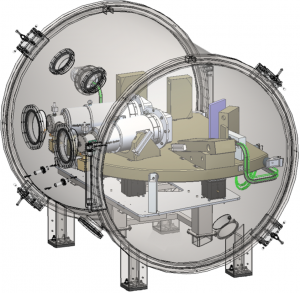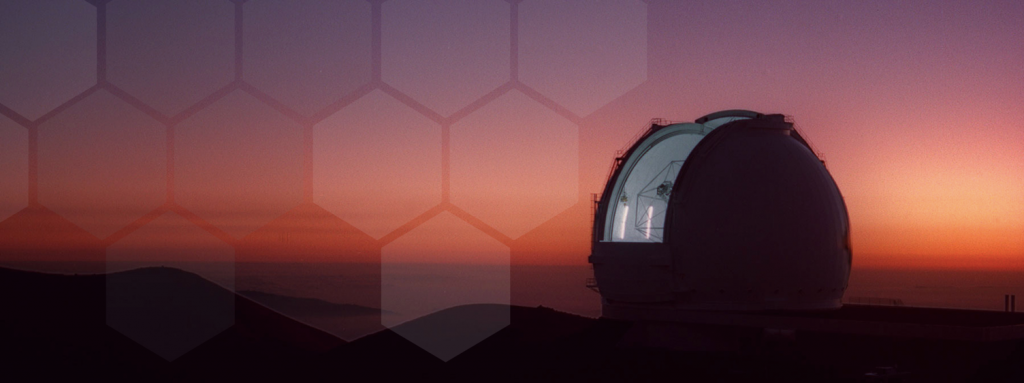The Keck Planet Finder will be a stabilized, fiber-fed, high-resolution (R~90,000) spectrometer with a broad spectral grasp (445-870 nm) across two cameras. The spectrometer has a well-proven asymmetric white pupil design, with an R4 echelle disperser and a VPH grism cross-disperser. The design includes a green channel (445nm to 600nm) and red channel (600nm to 870nm). A supplementary UV spectrometer (385–405nm) will capture the Ca II H & K lines at low resolution to monitor stellar magnetic activity.
Beam tracing of the optical path inside the KPF spectrometer.
Fed by the 10 m Keck I telescope, KPF is built for both high precision and high efficiency. Long-term radial velocity (RV) precision requires long-term instrumental stability and the ability to calibrate out short-term effects. The desire for high Doppler precision (30 cm/s goal, 50 cm/s requirement) thus motivates the meticulous overall design. Thermomechanical stability is enabled by a low-expansion Zerodur bench, mounts, and optics, enclosed within a vacuum chamber and thermal enclosure. Optical stability, on the other hand, is enabled by a highly scrambled and agitated fiber feed, and the careful optical design of the instrument itself. In addition, simultaneous wavelength calibration will be performed during operationfor KPF using a stabilized Fabry-Perot etalon, with reference to a suite of hollow-cathode emission lamps.

Instrument Highlights
- R ~ 90,000
- 2 channels: 444-590nm, 590-870nm
- Fiber fed with macroscopic scrambler and agitator
- Image slicing (x3) for maximum throughput
- Zerodur-based optomechanical design for maximum stability
- Asymmetric white pupil optical design
- Echelle disperser, VPH grism cross-disperer
- Vacuum chamber + thermal enclosure for environmental control
- Chromatic exposure meter
- Separate Ca H&K spectrometer
- On 10m Keck – extreme precision + efficiency in Northern Hemisphere
- Leverages long history of CPS + HIRES exoplanet discovery
